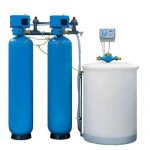Do you think someone may have counted the number of valve manufacturers in the world? It could be possible! It’d be safe to say that it could be a big number since valves are made for a wide variety of designs to suit many different applications ranging from very small to amazingly large. The purpose that valves serve is in the control of liquid and gas flow which, in turn, adds to their numbers since different materials will be required to enable the valve to be used with different chemicals.
The Ball Valve
A ball valve is one of the many different valve designs. It’s name is derived from its main feature , a sphere or a ball. A relatively large hole is drilled through the center of the ball. The hole is large enough to allow fluids to pass through from one side of the ball to the other.
The ball sits inside an open space known as the body of the valve and in tight contact with the walls of the valve body. Fluid enters the body from one side and, if the hole in the ball is lined up with that side, the fluid can flow through the ball and exit the valve on the other side. However, if the ball is rotated to present a solid face to the entrance, then fluid cannot pass through and the flow is cut off.
The ball can be rotated by a hand driven mechanism or mechanical means can be used to open and close the valve. Ball valves are essentially a “go – no go” type of control device rather than a means of changing the nature of the flow by throttling or the like.
Material Of Construction
Since the ball and other internal parts of the valve is in direct contact with the fluid to control the flow, it is really important that all the so-called “wetted” components be resistant to that fluid. If the fluid is water, then the chemical considerations are relatively simple and mainly concentrate on resistance to rusting. However, when handling more aggressive chemicals such as acids, more care has to be taken when choosing the materials for different parts of the valve.
For example, Authorized Parts Alloy 20 Ball Valves should be specified when sulfuric acid is the handled fluid. Alloy 20 is an alloy containing around 35% nickel with chromium, carbon, copper, molybdenum, manganese, silicon, niobium and iron that is well known for its corrosion resistance.






